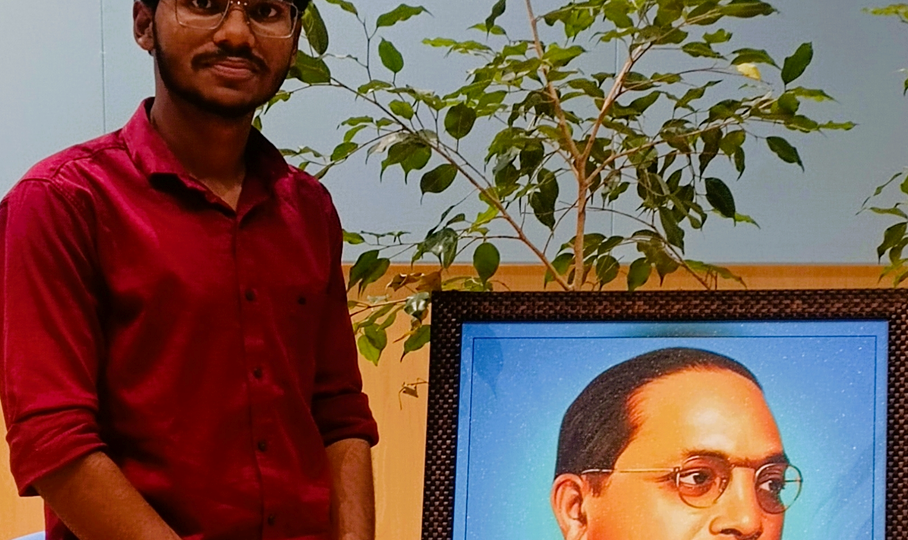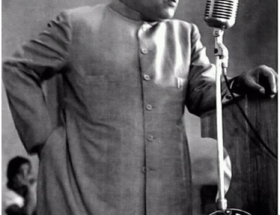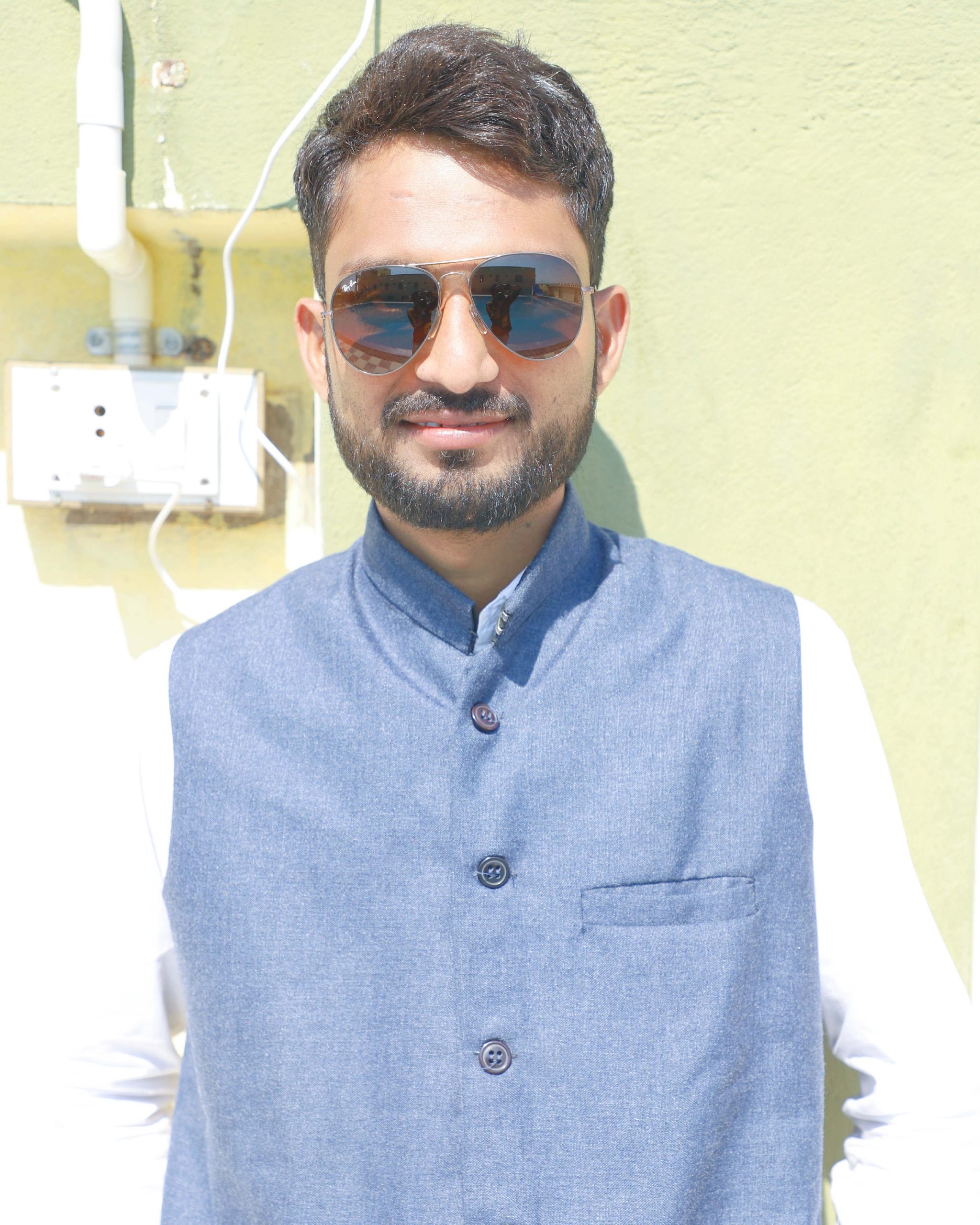Ankush Uttam Helode
When I hear these two words—‘Mother and Father’—it pains me a lot. This is drawn from my personal experience: my mother was so determined to pursue education when she was young, but couldn’t get one owing to her parent’s socio-economic status which made her cry many times. When I asked her what made their socio-economic status so deplorable, she blamed it on the hegemonically bounded Brahminical order. She further adds how taking birth in a Dalit family is the main reason for their deprived socio-economic situation. That’s why I feel painful – the pain of her broken desire, the pain of this discriminatory Brahminical order, the pain of her absence in these so-called liberal Brahmincal educational institutions.
Unfortunately, this isn’t only my mother’s story but also the history of most Dalit-Adivasi-Bahujan mothers and sisters. This Brahminical order doesn’t consider their potential because they lack resources. If ever the Brahminical order considers their potential, it will be based on so-called merit. They forget that these mothers and sisters had been deprived of resources for thousands of years by the same Brahminical order. They forget that all doors of education were closed for Dalit-Adivasi-Bahujan sections. To change this situation, the constitution of independent India adopted the system of educational-job-political reservations for SCs and STs. Despite this ameliorative step, we couldn’t stand true to the vision of our constitutional founders and achieve improvement of SCs’ and STs’ socioeconomic conditions.
“Privatization of education is the backdoor exit system from reservation”
Adding to the woes of the marginalized sections is the recent tendency of privatization of educational institutions which establishes another bottleneck to entry in education for already backward sections of the society by doing away with the system of caste-based reservation. This is revealed by the Government of India’s statement in Rajya Sabha whereby it informed the house that out of overall 1043 universities and 42343 colleges in the country, 476 and 31390 respectively are run by private sector players. This translates to a massive 46% and 70% of universities and colleges respectively being private, exacerbating the exclusion of SC, ST and OBC sections of society.
Caste in Azim Premji University
Azim Premji University (APU) was established in the year 2010 by the APU Act, 2010 in Karnataka as a ‘Not-for-profit’ university. “Contributing to a just, equitable, humane and sustainable society” is its vision while the purpose is “Education for social change”. Looking at the vision and purpose one can assume that APU is doing good work. The university provides financial assistance to economically backward students and thus helps many to pursue higher education.
Although these steps could be beneficial for many students, my concern stems from the reasoning that the university isn’t true to its purpose and vision completely. While conducting the national level entrance examination and interviews, APU has an affirmative policy of awarding extra marks to students based on their deprivation (what this deprivation means is not made public). But here come my questions:
● Is this enough for social change?
● Is this enough for those sections of society that have been historically denied and deprived of all resources?
● Is this enough for the 1st generation of learners who also need to work simultaneously to earn bread for their families?
● Is it enough to maintain social diversity in educational campuses like APU?
In my opinion, answers to all these questions are a straightforward ‘NO’. I think that all this is a “Gandhian view of charitable education”.
In India, social change is driven by an upper-caste tendency in which they take every visible and invisible opportunity of education for their own betterment and then claim to work for backward sections of society and this is where their ‘Social change’ comes from. Unfortunately, APU is also driven by the same tendency where it claims to forward social change but actually, it is creating nothing but an ‘Island of so-called intellectuals from upper castes’, with an underrepresentation of students from Dalit-Adivasi-Bahujan communities.
Considering APU’s vision and purpose of creating a just and equitable society, I doubt whether the means to achieve this end is inclusive because of the same reason as quoted above i.e. underrepresentation of students from Dalit-Adivasi-Bahujan communities.
Many of you might argue that since APU is a private university it doesn’t guarantee representation for backward castes but if one looks at its purpose and vision these questions and doubts are not illegitimate. I argue that if the APU seriously wishes to carry forward social change, it must include most Dalit-Adivasi-Bahujan students and this is how the university would truly deliver on its goals.
Masters in Public Policy & Governance: Serving Upper Caste Students!
In MPG 1st year there are 56 students in total out of whom 36 are female. This needs to be appreciated but when it comes to caste-based diversity only 2 girls are from OBCs and 1 from STs whereas none are from the SCs. Coming to the male section of the class only 3 are from SCs and 4 from OBCs while there are none from STs. That aggregated comes to 10 people from backward communities out of a total of 56 students in all. This accounts for a meager 17.85%. In MPG 2nd year there are 46 students in total. Here more than 95% of students are upper caste.
Referring to the data above, one can easily infer that when APU talks about diversity, it does not mean social diversity. This makes its claim of working for a just and equitable society a false notion. Denying opportunity to Dalit-Adivasi students for education on the basis of so-called merit also implies the loss of their potential which in turn negatively impact the university’s education system. I argue that this is because if a classroom is filled with only upper caste students then the views of upper caste faculty and students converge on caste. Thus limiting the perspective of the class (and university) to the Gandhian charitable view on caste and that defeats the very purpose of inclusivity and diversity in any engagement. To break this Gandhian view, there’s a need for adequate representation of Dalit-Adivasi-Bahujan students in any classroom.
I strongly believe: if APU or any other university thinks about social inclusivity without considering caste, they are trying to earn brownie points on false bases.
I feel anyone can ignore my views on this issue but cannot deny their validity because they do not emerge out of thin air but are rooted in reality. I hope that the the university stands on its toes to better align itself with its purpose and vision.
~
Ankush Uttam Helode did his B.A Political Science from Garware College, Pune. Now he is pursuing Master of Arts in Public Policy and Governance from Azim Premji University, Bangalore.










